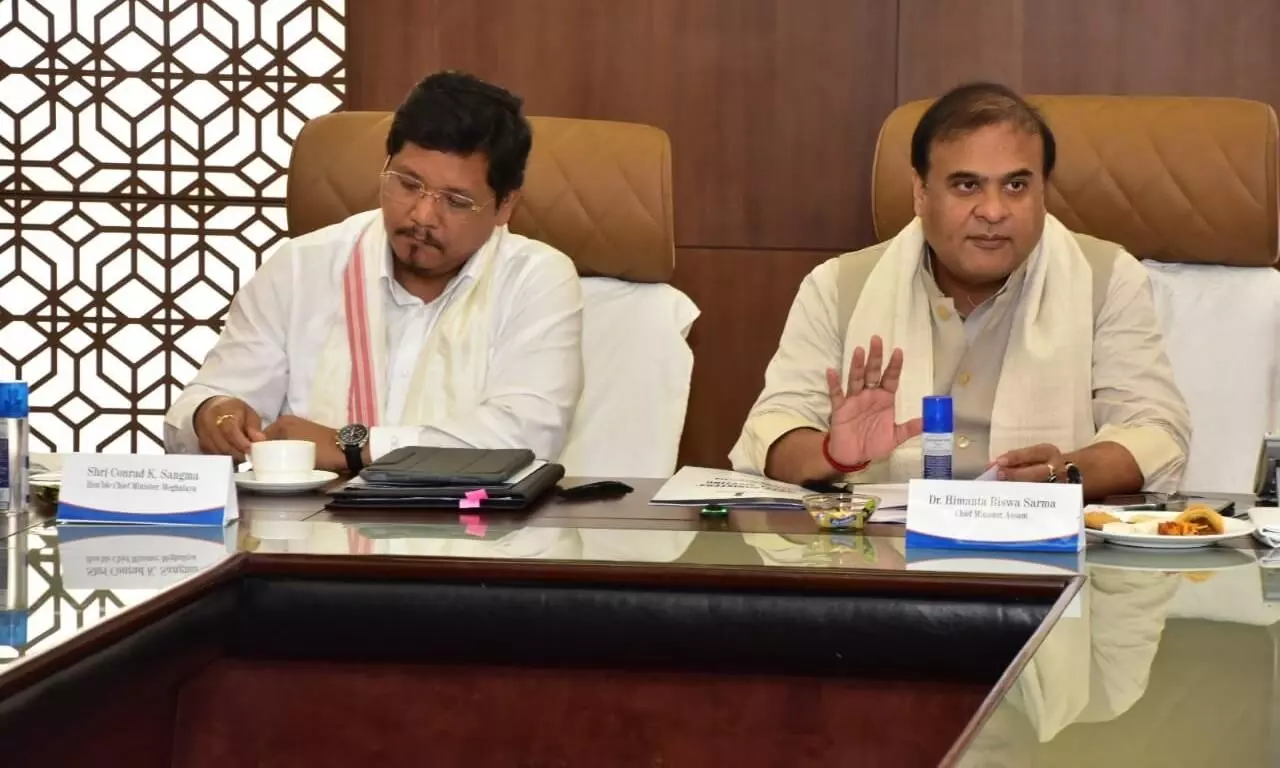
A file image of Meghalaya CM Conrad Sangma and Assam CM Himanta Biswa Sarma (Photo: X)
For over five decades, ambiguity along the Assam-Meghalaya border has cast a long shadow over governance, development, and harmony. Since Meghalaya was carved out of Assam in 1972, the two States have lived with simmering tensions, territorial claims, and periodic unrest stemming from undefined borders.
But today, that long wait for resolution is finally bearing fruit. This week, survey teams and administrative officials from both States arrived in the Hahim area under Assam’s Kamrup district to begin installing boundary pillars – a physical, visible symbol of decades of negotiation and goodwill. The work, beginning at Rangthali village and stretching along the Gijang and Tirchang rivers, is more than a technical exercise – it marks a turning point in how we relate to each other as neighbouring States.
The journey to this moment has not been easy. In June 2021, Chief Ministers Himanta Biswa Sarma and Conrad Sangma took the bold decision to adopt a “give-and-take” approach, setting up regional committees to identify and resolve the most contentious sites. That process culminated in the signing of a landmark Memorandum of Understanding in March 2022 – a historic agreement brokered in the presence of Union Home Minister Amit Shah.
Of the 12 identified disputed areas, six were resolved in that first phase. These include Hahim, Gijang, Tarabari, Bakalapara, Khanapara-Pilinkata, and Ratachera – covering a total of 36.79 sq km. The division of land, nearly equal between the two States, reflects a spirit of cooperation and fairness.
With boundary pillars now being installed in these areas, the impact will be immediate and far-reaching. Residents on both sides finally gain clarity on which administration governs them – clearing the way for better services, infrastructure and law enforcement. What were once “grey areas” can now begin to thrive under proper jurisdictional clarity.
True, some minor issues still persist in the resolved areas, but both administrations have shown commitment to resolving them through continued dialogue. Meanwhile, the remaining six disputed areas will be taken up in due course – hopefully with the same level of maturity and mutual respect that has brought us this far.
Both governments must persist with careful, constructive dialogue and adhere to legal processes to work toward a lasting resolution. A comprehensive strategy that includes political and administrative channels is essential for building consensus.
The people of Assam and Meghalaya deserve peace, development, and a future free from the burden of an inherited dispute.
The boundary pillars rising from the soil of Hahim and its neighbouring villages are more than concrete markers – they are milestones of trust, cooperation, and hope. This will be remembered as the moment when two sister States, after 50 years of ambiguity, began walking firmly toward shared peace and progress.
